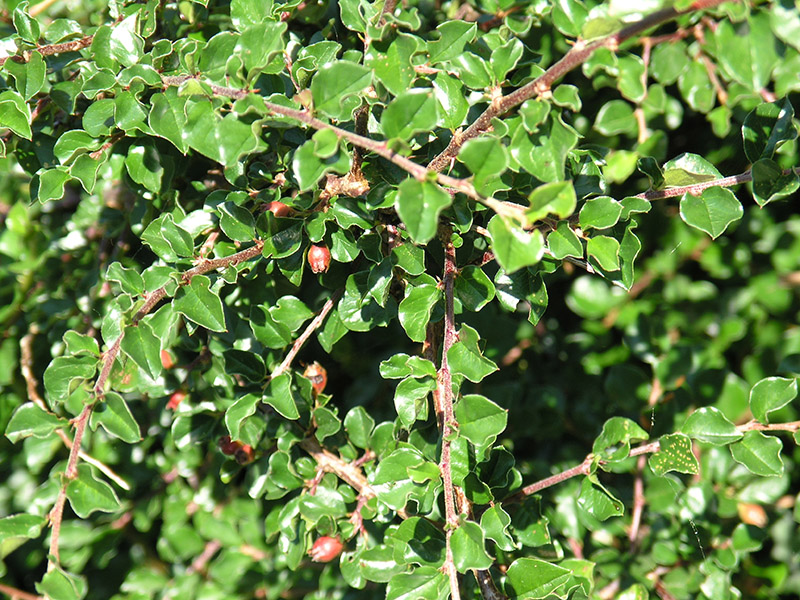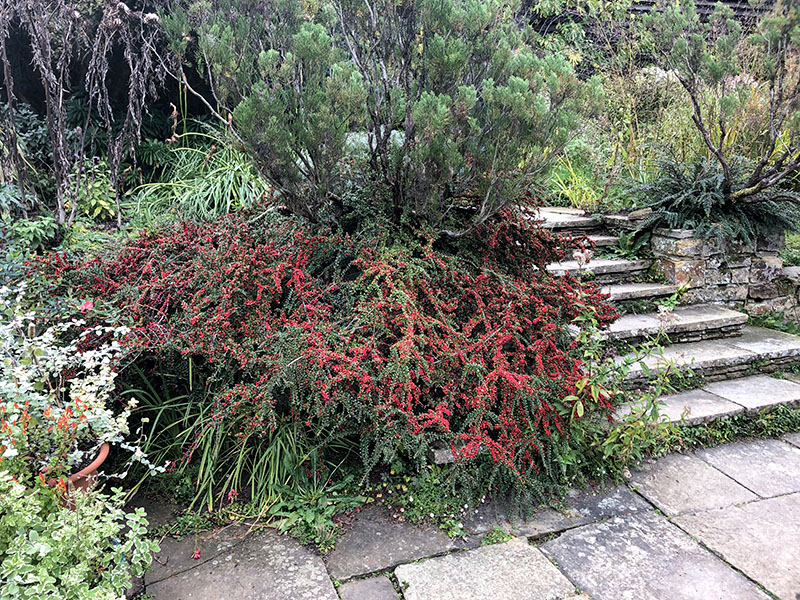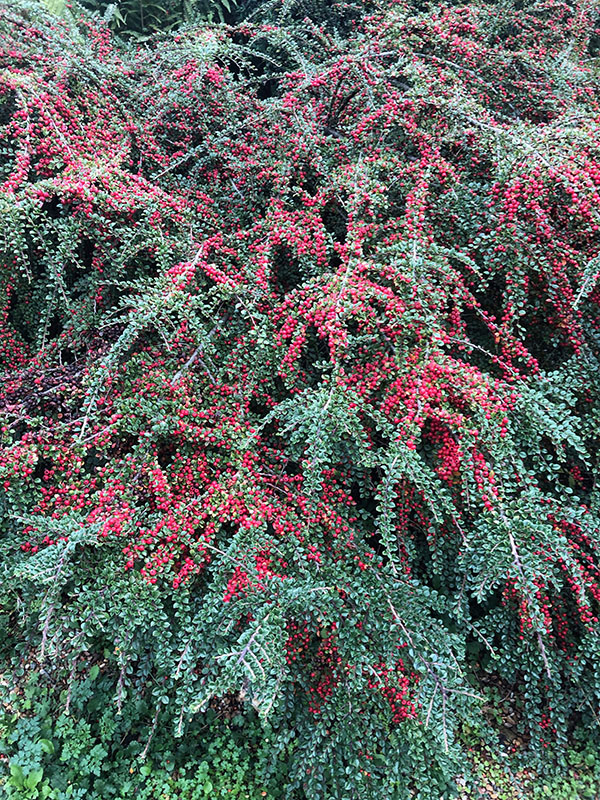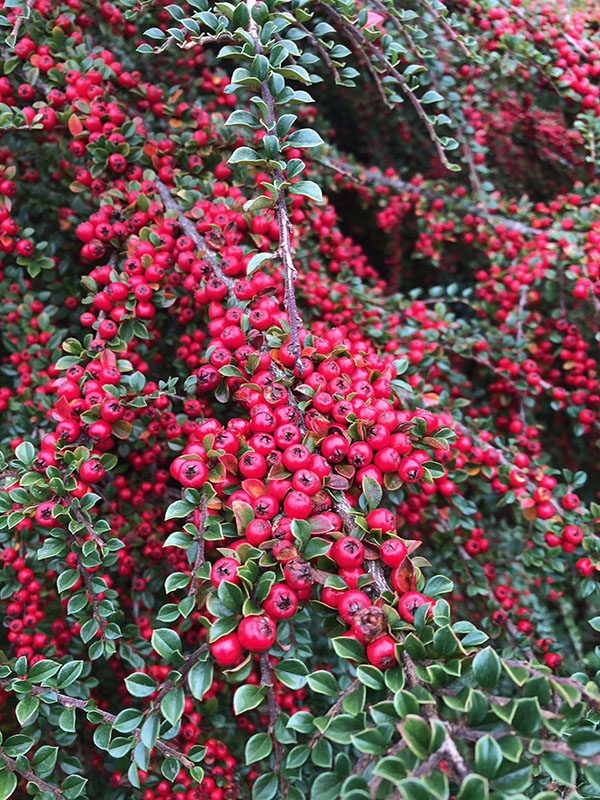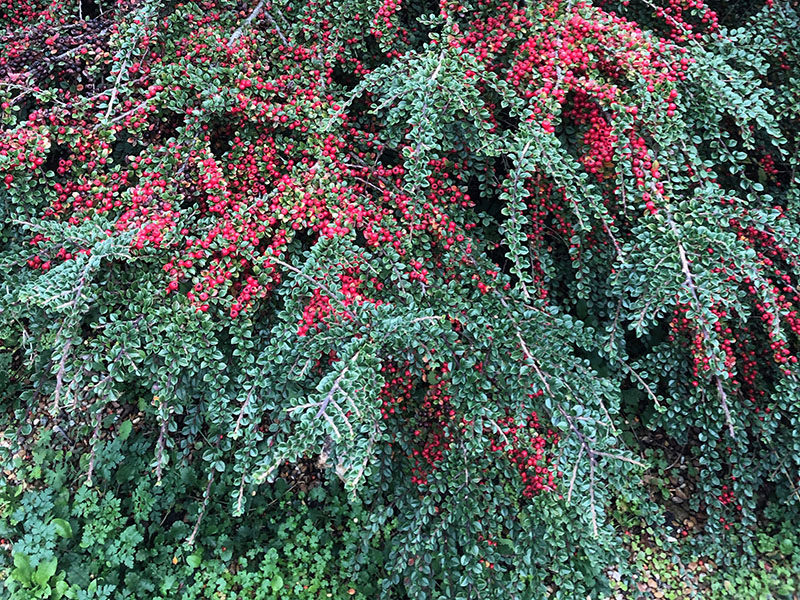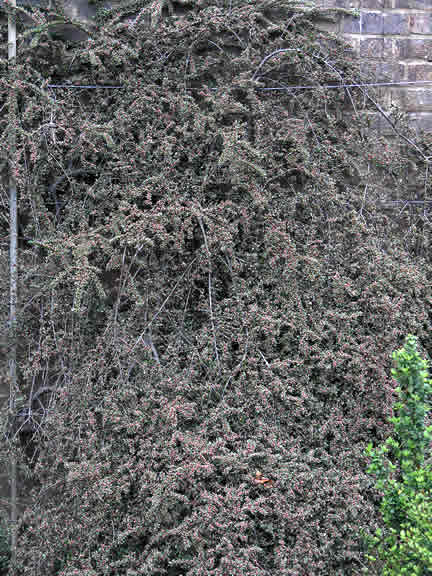
Woody > Cotoneaster > Cotoneaster horizontalis > Cotoneaster horizontalis
Cotoneaster horizontalis
Rockspray or Rock Cotoneaster
Origin: Western China, introduced to the western world in the 1880’s.
Mike's
Opinion


"
Known as the Rocky or Rockspray Cotoneaster and belonging to the Rosaceae family, Cotoneaster horizontalis produces a beautiful pink flower in late spring and red berries that persist into the winter. This plant is found as a deciduous, semi-deciduous, semi-evergreen, to completely evergreen plant in southern locations. This specimen has beautiful attributes that work nicely in a residential or commercial landscape but use with caution as it can sometimes be a garbage collector in commercial landscape settings where its foliage will trap all manner of debris.
Michael Pascoe, NDP., ODH., CLT., MSc. (Plant Conservation)
"
| Family |
| Rosaceae |
| Genus |
| Cotoneaster |
| Species |
| horizontalis |
| Category |
| Woody |
| Type |
| Shrub (deciduous), Shrub (evergreen) |
| Pronunciation |
| USDA Hardiness Zone |
| 5-7 |
| Canadian Hardiness Zone |
| 3a-7b |
| RHS Hardiness Zone |
| H7 - H5 |
| Temperature (°C) |
| -20 |
| Temperature (°F) |
| -28 |
| Height |
| 50 - 95 cm |
| Spread |
| 160 - 260 cm |
Photographs
Description and Growing Information
Flowering Period
| General Description |
| This plant is quite attractive year round, covered in pink flowers in late May and red clusters of fruit during the winter. It grows quite low to the ground, sometimes reaching 95 cm in height but can be trimmed to maintain a compact form in landscaped or formal areas. |
| Landscape |
| Rock Cotoneaster can be used as a groundcover, mass planting or espalier up a wall or fence. |
| Cultivation |
| Well-drained sandy, loamy or clay soils in full sun to partial shade. |
| Shape |
| Low growing and spreading horizontally. |
| Growth |
| Fast |
| ID Characteristic |
| The stems are arranged in a fish bone arrangement. Produces a rich, red pomme fruit. |
| Pests |
| Fire blight, leaf spot, and spider mites can all be factors if planted in shady areas with poorly drained soils however, if planted in the sun with well-drained soils, those pests should not be a problem. |
| Habitat |
| Thickets on rocky slopes and dry mountains. |
| Bark/Stem Description |
| The grey bark is smooth on young stems becoming slightly ridged as it ages. |
| Flower/Leaf Bud Description |
| Small, appressed on the stem, grey-brown in colour, covered with 2 bud scales. |
| Leaf Description |
| The leaves are simple, alternate, and glabrous on top and pubescent below. |
| Flower Description |
| The pink, five petaled flower is quite small at 5 mm however, covers the plant nicely. |
| Fruit Description |
| The small, 5 mm, circular red pome fruit persists throughout the winter and can be an attractive attribute. They ripen in September through October. |
| Colour Description |
| Leaves are dark green in the summer, losing some of its leaves in winter, those remaining turn a purple/red colour. The bark is grey to brown. |
| Notable Specimens |
| Holden Arboretum Mentor, Ohio, United States of America. Great Dixter Garden, East Sussex, England. |
| Propagation |
| Scarify the seed in concentrated sulphuric acid for 90-180 minutes then stratify in moist peat soil for 90-120 days at a temperature of 5°C. Softwood cuttings can also be taken in early summer and should be planted immediately, using a rooting hormone for best results. |
References
